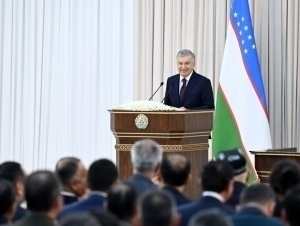Is the Latakia Massacre a black mark on Jolani?
Review
−
11 March 5894 9 minutes
The unrest in Syria, which lasted nearly a week, has now subsided. On March 6, the new government that came to power in the country faced a serious problem on the Mediterranean coast. While it was emphasized that the most critical issue facing interim President Ahmed al-Shara today is finding common ground with the Kurdish militants who control a large part of Syria and suppressing their activities, it turned out that supporters of the Assad regime had prepared an unexpected "surprise" for many. However, al-Shara described this as an "expected problem." Since the overthrow of the old regime, it has become clear that Assad's supporters in the provinces of Tartus and Latakia have remained a serious "headache" for the new government. The Alawite clan, to which the Assads belong, has settled in these areas and has resisted the current interim government in various ways. The new government's security forces' offensive against Assad's supporters ultimately led to a bloody conflict. It is reported that more than a thousand people were killed in the clashes. However, official Damascus has now announced that the conflict has calmed down and the situation has stabilized somewhat. Despite this, there are rumors of violence against civilians and mass executions by government forces. These events are likely to affect the reputation and international image of Ahmed al-Shara, who has only been in power for three months. The events in Latakia and Tartus bear a striking resemblance to the very serious mistake that Bashar al-Assad made in Idlib 14 years ago. The massacre of civilians during that time played a pivotal role in determining Syria's future. So, what is Ahmed al-Shara doing about this issue now? Will he repeat Assad's mistake from 2011, or has it already been repeated?
Clashes with "Assad remnants"
Since the forces led by Hayat Tahrir al-Sham overthrew Assad and seized power in Syria in December 2024, they have faced regular attacks from members of the Alawite minority, a group closely associated with Assad's clan. On March 6, Syria's new government launched a major operation against this ethnic group, which makes up 1/10 of the country's population. This move by the current government came after attacks on security forces by supporters of the ousted Assad regime. In fact, since Assad's fall, the new government forces have been systematically purging supporters of the old regime from among the Alawites, to whom Assad belonged. This was one of the factors that automatically led to the flare-up of the conflict between the two sides. The conflict, known as the "Alawite Uprising," escalated. The rebellion is said to have been led by one of the generals who remained loyal to the Assad regime, Ghiyas al-Dawla. The rebels were forced to retreat on March 7, a day after the uprising began, with the help of additional forces from Hayat Tahrir al-Sham. The massacre of civilians in the area is also said to have taken place on that day. According to the Britain-based Syrian Observatory for Human Rights, civilians may have been killed by security forces or pro-government fighters.
Violence has been carried out by both sides. In particular, Syria's state news agency SANA reported that on the early hours of March 8, "remnants of the ousted Assad regime" attacked the national hospital in the coastal city of Latakia. Assad supporters burned several houses, stole cars, and looted homes. According to SANA, Assad supporters also attacked the SADCOP oil company facility in Latakia. Syrian security forces managed to repel the attack. Syrian interim President Ahmed al-Shara called on rebels to "lay down their arms and surrender without delay." A spokesman for the new Syrian government's security services stated that the operation to "restore security" in the cities, villages, and mountains of the coastal provinces of Latakia and Tartus was "aimed at the remnants of Assad's fighters and those who support them," urging local residents to "stay in their homes."
The operation against the rebels ended on March 10. However, the death toll in the conflict has reportedly exceeded 1,000. According to the Syrian Observatory for Human Rights, 745 of the victims were civilians, most of whom were shot at close range. Another 125 were government security forces, and 148 were fighters from armed groups affiliated with Bashar al-Assad. The conflict is being described as one of the worst massacres in Syria's 14 years of unrest. Local residents reported that bodies were left lying in the streets and on rooftops, and it was impossible to remove them. Gunmen prevented local residents from burying the victims. It is reported that many people fleeing Syria are heading to Lebanon, while some have sought refuge at Russian air bases.
Admitting a mistake
Yesterday, March 10, Syrian interim president Ahmed al-Shara announced that the crisis in Latakia province had been successfully resolved, calling the latest developments “an expected problem.” Al-Shara described the clashes in Latakia province between the army and supporters of the ousted Assad regime as an attempt by Assad's supporters to “test the new Syria they do not know.” Syrian Defense Ministry spokesman Hassan Abdul Ghani also announced that the situation in the Syrian provinces of Latakia and Tartus, where clashes between security forces and Alawite militant groups had occurred, had stabilized. The Defense Ministry spokesman stated that government forces had completed the military operation and “succeeded in eliminating the remnants of the former regime.”
However, more than a thousand people were killed during the five-day unrest, with some sources putting the death toll at over 1,300. The most tragic aspect of the violence is that most of the victims were civilians. The new administration, led by Ahmed al-Shara, did not deny that gross mistakes were made in suppressing the rebellion. However, they placed the blame not on their own security forces, but on the scattered groups that voluntarily aided them. It was also announced that a special committee had been formed to investigate the mistakes made during this bloody conflict and to punish those responsible for the deaths. Al-Shara promised to punish all those found guilty.
Mistake that brought Syria to its current state
The bloody violence in Latakia is reminiscent of the most disastrous decision in Syrian history made by Assad 14 years ago in a city in Idlib. Information available to date indicates that in both of these incidents, civilians were shot by government forces. The massacre in the city of Jisr al-Shughur by Bashar al-Assad went down in history as one of the decisive events that contributed to bringing Syria to its current state. The protests against corruption and bribery that began in Tunisia in December 2010 spread throughout the Arab countries of North Africa and the Middle East in 2011. This process, which became known as the “Arab Spring,” laid the foundation for the bloody civil wars that would follow in the region. Soon, Syria found itself caught in the whirlpool of such a fratricidal conflict. Ruthless massacres began between the authorities and the opposition forces. In between, the civilian population suffered immense pain and torment. One of the many battles in which ordinary people were oppressed took place in June 2011 in the city of Jisr al-Shughur in Idlib, located on the border with Turkey. This event would determine the future of Syria’s place in the world and its political image, including that of Assad. Jisr al-Shughur, a city 330 km from the capital Damascus and 20 km from the Turkish border, had a population of 50,000 at the time. On June 6, 120 soldiers and police were reportedly killed by protesters in the city. Just a week earlier, 13 members of the new government's security forces were killed by rebels in Latakia, and the fighting escalated. On June 9, Syrian security forces arrived in the city and began an operation on June 12, using about 200 pieces of military equipment, including tanks and helicopters—similar to the operations launched by the new government forces against the rebel Alawites in Latakia today. This move, made in the summer of 2011, solidified Assad’s image globally as a murderous leader who took up arms against his own people. However, Syrian state media reported that “the city was almost empty when the government army took up positions near and inside Jisr al-Shughur and launched military operations.” The army general claimed that the troops were merely seeking those responsible for the deaths of their comrades and did not shell the city. However, local residents told journalists that the killings of police officers were deliberately organized by Assad’s special services, through which they planned to carry out “counter-terrorism” operations against the protesters. According to several eyewitnesses, the massacre began because part of the government forces and police rebelled and joined the local population in opposing the authorities. In the midst of these events, the civilian population in the city fled in all directions. More than 4,000 Syrians headed for the Turkish border, just 20 km away from Jisr al-Shughur, much like the people fleeing the bloody clashes in Latakia and Tartus are now heading for Lebanon.
Thus, Assad’s decision came at a very high cost. But it was only the beginning of a chain of seemingly endless mistakes made by the dictator during his 24-year repressive rule. The protests against Assad’s regime led to a long civil war, leaving the country torn apart. Most tragically, the war became a breeding ground for terrorism. One of the most serious threats to humanity, the terrorist organization ISIS, filled the control vacuum in Syria. Assad, in turn, relied on the help of Russia and Iran to fight ISIS and other terrorists, as well as rebel groups. He regained control over many parts of the country, but this alliance turned Syria into a zone of interest for Moscow and Tehran. During these years, Bashar Assad continued to massacre civilians with the help of Russian forces. Russian airstrikes targeted ISIS and other terrorists, but over time, it became common for more than 10,000 civilians to be killed alongside 6,000 ISIS fighters. Bashar's repressive regime set the country aflame. The civil war caused the deaths of half a million people. These and other factors ultimately led to the downfall of the Assad regime. One of the main reasons for these developments cannot be forgotten: Assad opened fire on his own population, his citizens. It is difficult to say for sure whether al-Shara has repeated this mistake in recent days. However, whatever happens, he must learn from the mistakes of Assad during his 14-year confrontation with him. Otherwise, Syria will soon revert to being a center of terrorism, bloodshed, and other atrocities.




